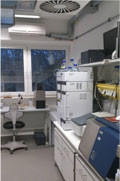General
Today, honey quality and marketing are two inseparable concepts. Legislation, i.e. food law, was amended in the area of honey and adapted to the requirements of the European Community (Council Directive-2001/110EC, 2002). The German Beekeepers Association (DIB), a series of regional quality labels and guidelines for organic products have even stricter criteria. Since the vast majority of beekeepers in Germany are hobby and sideline beekeepers, most of them cannot compete with the prices of imported honey, but can do so in terms of quality. Certified quality honey increases the competitiveness of beekeepers, since customers are placing increasing emphasis on controlled, certified food quality.
In contrast to many other foods, honey is a natural product with a large number of compounds. Its composition and quality is decisively determined by the nectar input of a large variety of plants in various combinations but external factors such as weather conditions, soil quality, beekeeping measures, amongst many other things, must also be taken into account. The study of the quality of honey has long been a research focus at LIB. Emphasis was not only placed on the development of new analytical methods in order to offer regionally-based beekeepers, in particular, a cost-effective honey analysis but also on the study of substances in honey. New findings in this area can be used to help beekeepers improve their honey quality and find new marketing channels. This also includes the determination, for example, of the plants' origin and therefore geographical origin of honeys. Especially regional products are growing in demand. Along with the nectar, the pollen grains of the plants visited by the bees enter the bees' honey stomach. Since pollen grains are later found in honey, the pollen spectrum of a honey sample can later be used to determine its botanical and geographical origin. Honey can therefore serve as an indicator of pollination or occurrence of the different plant species in a given region.
Approx. 20,000 honey samples were analysed in the last 25 years and are part of the research projects in the area of honey analysis.
Infrastructure honey lab:
- Nicolet iS50 FT-IR (Thermo) and heatable ATR- Unit
- HPLC (Detector PDA, RID and Fluorescent; Shimadzu)
- Microscope with camera and additional observer (Olympus BX 61)
- Refractometer


